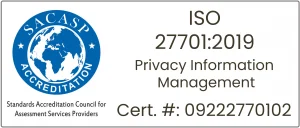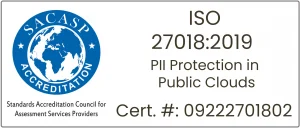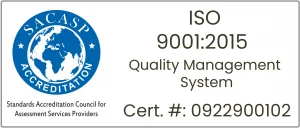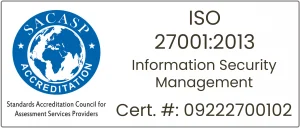As you may be aware, the Bank of England released a few important updates to depositor protection following PRA Consultation Paper (CP9/22) which has been published in Q3 2022. Our SCV experts have done an extensive impact analysis on the proposed changes by PRA, both from the Technical and business perspective. The major effect and relief is the COA (Continuity of Access) & Dormant Account Scheme rule been removed for the immediate term thus removing the ambiguity around these two rules.
We have covered all the items and necessary remediation or action required from a financial Institution (FI’s) standpoint in this article. Please read on further to learn more about each item in detail and see if you need to proactively plan to bring the changes either to your internal reporting platform or functional/operations level change to address these regulatory “must have” implementations at the earliest and stay fully compliant. Through our quarterly and seasonal patch upgrades, we automatically take care of our customers who currently use our solution.
As a result of the aforementioned changes, we anticipate that all FI’s may soon experience a new round of FSCS drills to reaffirm assurance on their readiness by PRA. Hence, it would be an excellent opportunity to make pro-active plans to implement these changes ahead and conduct stress tests on your internal systems and processes to prepare to withstand the storm.
Updates to the depositor protection following the PRA consultation paper
Background
The CoA Rules were implemented in 2015 to support the resolution and the PRA’s safety and soundness objective by reducing the adverse effects of firm failure on the stability of the UK’s financial system. The CoA Rules aimed to support the continuity of covered by maintaining a depositor’s access to deposits and banking services while a deposit taker was undergoing resolution using a Bank Insolvency Procedure (BIP) or a Building Society Insolvency Procedure (BSIP), via a transfer of covered deposits to a purchasing institution.
Following the introduction of the CoA Rules, the Bank of England’s (‘the Bank’) approach to resolution evolved, causing the Bank to reassess the transfer of FSCS-covered deposits using CoA functionality. As a result, in advance of the 1 December 2016 effective date of the CoA Rules, the PRA provided a WBC to a broad set of firms. This WBC substantially narrowed the scope of application of the CoA Rules for three years to exclude small BIP/BSIP firms and bail-in firms and allowed the Bank to consider the longer-term policy requirements for transfer resolution strategies. The original WBC expired in 2019. This was extended for a further three years to 1 December 2022 due to the possible impact of the Bank’s review of its approach to setting a minimum requirement for own funds and eligible liabilities on the scope, functionality, and necessity of the CoA Rules. During these six years, at any one time, only around 13 firms have been required to comply with the CoA Rules. Approximately 140 firms currently hold a WBC.
The Bank, alongside the PRA, has recently initiated work to develop alternative solutions to reduce disruption to transactional accounts in the event of an insolvency procedure (See PRA statement – ‘Improving depositor outcomes in the bank or building society insolvency’ (IDOBI)). This work will look to provide depositors with improved access to their deposits throughout such an insolvency procedure, and the PRA may consult in due course on proposed future rules in this area.
Proposal
The PRA is proposing to revoke the CoA Rules and amend other rules referring to CoA before the expiry of the current WBC and amend SS18/15 accordingly. The PRA considers that revoking the rules would ensure that, in the future, firms that would otherwise have had to develop systems to comply with the CoA Rules would not be disproportionately burdened by rules that are currently not being enforced for the majority of firms.
In addition to the proposal to revoke the CoA Rules, the PRA is also proposing that firms that have already developed CoA system capabilities should consider maintaining or archiving those systems. While the outcome of the IDOBI workstream is not yet known, it may lead to a consultation with proposed new rules that impose similar requirements to the CoA Rules. The PRA proposes that as part of this process, while such firms should maintain the capability to complete field 48 of the Single Customer View (SCV), which requires details of a customer’s transferable eligible deposits when completing the SCV, firms should leave it blank so that it acts as a legacy field retained as a placeholder. This may reduce any future costs should the outcome of the IDOBI workstream require firms to develop systems with similar functionality.
The PRA has previously stated that it would ensure that firms had at least 18 months to implement changes in connection with the re-implementation of the CoA Rules. The 18 months notice period was designed to give firms sufficient time to build the required systems. As the PRA is revoking rather than imposing additional rules on firms, which is intended to prevent new firms in scope of the CoA rules from investing in building new systems that may turn out to be redundant, the PRA does not consider that firms would require 18 months’ implementation time.
Action Required
Based on Macro Global’s analysis of the COA requirements, it has been observed that FI’s neither needs to get COA waivers from PRA nor implement COA activities at the CBS level.
In SCV Report, the transferrable eligible deposit field (field 48) must be reported with a blank value henceforth which Macro Global will be rolling out a new patch in the SCV Automation process shortly. In case you have not been onboarded with Macro Global’s SCV Automation for the SCV submission file generation, please ensure your existing application can handle this.
Background
The Dormant Account Scheme (the ‘Scheme’) was established under the Dormant Bank and Building Society Accounts Act 2008 and was originally launched (in respect of dormant bank and building society accounts only) in March 2011. The Scheme enables money that is held in dormant accounts to be distributed for the benefit of the community while protecting the rights of owners or beneficiaries to reclaim the value of their assets.
Under the Scheme, participating institutions can transfer money held in eligible dormant accounts to a dormant account fund operator. The dormant account fund operator manages the money received so that it can meet repayment claims from owners or beneficiaries should they come forward in the future, and distributes surplus money for the benefit of the community.
Under section 213 of the Financial Services and Markets Act 2000 (FSMA) and the FSMA (FSCS) Order 2013 (S.I. 2013/598), the PRA was required to make rules establishing a scheme for compensating persons in cases where a dormant account fund operator is unable, or likely to be unable, to satisfy a repayment claim against it. These rules, which are set out in the Dormant Account Scheme Part of the PRA Rulebook (the ‘DAS Rules’), provide for FSCS compensation in respect of repayment claims made in connection with a dormant account fund operator that is in default.
The Dormant Assets Act 2022 (the ‘2022 Act’) modified and expanded the Scheme to cover additional assets such as insurance, pension, investment, and securities assets. footnote [13] As part of the changes made by the 2022 Act, the 2013 Order was amended to exclude repayment claims made in connection with a dormant account fund operator that is in default from the scope of FSCS protection. Accordingly, the PRA no longer has the power to provide FSCS protection on repayment claims under the Scheme, and the DAS Rules have become obsolete.
Instead, HM Treasury is committed to ensuring consumer protection in the event a dormant account fund operator footnote [14] is or looks likely to be unable to meet its liabilities, and to upholding the core principle of the Scheme (i.e., that owners or beneficiaries can reclaim the amount of their dormant asset balance owed to them at any time). If there was a considerable risk that a dormant account fund operator could not fulfil its reclaim obligations, HMT would assess the most appropriate course of action in line with these principles, which may include the use of a loan to the dormant account fund operator.
Proposal
The PRA proposes to remove the DAS Rules from the PRA Rulebook, given that the PRA no longer has the power to provide FSCS protection of repayment claims under the Scheme. The deletion of the DAS Rules necessitates some consequential amendments to other Rulebook Parts which refer to the dormant account scheme.
Following the removal of the DAS Rules from the PRA Rulebook, the FCA will be making associated changes to the Fees manual (FEES) in the FCA Handbook to remove obligations relating to dormant account fund operators and the Scheme.
Action Required
This CP change is only applicable to FSCS. As per the PRA rulebook, if the dormant account operator is in default status, then the repayment claim will be handled by HMT directly.
Background
The PRA has become aware that the rules on Temporary High Balances (THB) in Depositor Protection 10 in the PRA Rulebook need to be amended to reflect the underlying policy intent and remove any ambiguity.
The PRA considers that the THB rules are unclear as to whether a trust can claim a THB on behalf of a beneficiary. When a trustee operates a bank account on behalf of a beneficiary, it is the trustee and not the beneficiary that is the legal account holder. The current definition of a THB refers to a ‘depositor who is an individual’. The PRA considers this could be interpreted to exclude corporate trustees and potentially all trustees from bringing a claim for a THB. This causes tension with the underlying policy intent as evidenced by the SoP – DGS which envisages trustees being able to claim THB protection on behalf of beneficiaries footnote [15] and the ‘look through’ concept that applies to trusts in the context of the DP Part of the PRA Rulebook. Moreover, in the case of a trust, the policy intent is that it is the individual beneficiary rather than the account holder/depositor who is of relevance in determining whether or not the rules on THB apply.
The PRA also considers that there has been some confusion as to how the rules on THB apply to joint accounts, specifically when one of the account holders dies. The existing rules in DP 10.2 provide for the THB regime to apply to sums paid to a depositor connected to a person’s death or which are held on the account of a deceased’s representative. However, the PRA considers that they do not set out how the THB regime applies in the event of a death of a joint account holder.
Currently, joint account holders are each entitled to FSCS protection up to the relevant limit, either £85,000 or, if the deposit is attributable to a THB, up to £1 million (unless the THB relates to payment in connection with personal injury or incapacity in which case there is no limit). This means, for example, that where there is a joint account with two account holders the account holders receive either £170,000 or £2 million FSCS protection in total. However, this protection is reduced to £85,000 or £1 million when one of those account holders dies, which means that if the firm then fails, the surviving account holder will have a substantial portion of their deposit not protected by the FSCS. This is not our policy intent.
Proposal
To ensure that FSCS protection continues to function in the way it was intended, the PRA proposes to amend the rules on THB to ensure that (i) trustees (whether individuals or corporate trustees) claim on behalf of eligible beneficiaries and (ii) the criteria for determining whether the THB rules apply are assessed about the individual beneficiary rather than the account holder/depositor. The PRA proposes that in line with the existing rules in the DP Part of the PRA Rulebook, the trustee of a bare trust would be able to bring a THB claim on behalf of each beneficiary, and the trustee of a discretionary trust would be able to bring one THB claim per group of beneficiaries.
To remove the current gap in protection for joint account holders, the PRA proposes to amend the rules in DP 10.2 to explicitly cover situations where a joint account holder dies. The PRA proposes to amend the rules relating to THB to provide that for a joint account, the FSCS protection limits of the surviving account holders would be increased by an amount calculated by dividing between the surviving account holders the limit applied to the deceased account holder at the date of death. The table below provides an example of the proposed changes where one depositor dies.
| Depositors | Amount of deposit in a joint account | Proposal |
| 2 Depositors | £170,000 | FSCS protection is limited to £85,000 per depositor. The deceased’s protection is not split as there is only one remaining account holder so the surviving account holder receives £170,000 if failure is within 6 months of the death |
| 3 Depositors | £6 million (The deposit does not constitute a THB) | FSCS protection is limited to £85,000 per depositor. The deceased’s protection is split between the two remaining account holders so they each receive £127,500 (£85,000 + £42,500) if failure is within 6 months of the death |
| 3 Depositors | £6 million (The deposits are attributable to three separate THB events that have a £1 million limit) | FSCS protection is limited to £1 million per depositor. The deceased’s protection is split between the two remaining account holders so they each receive £1.5 million (£1 million + £500,000) if failure is within 6 months of the death |
The PRA considers that this would provide the surviving account holder(s) with THB protection for six months, giving them time to arrange their financial affairs and transfer any amounts over the relevant FSCS protection limit to another deposit taker.
Action Required
The THB is an exclusive FSCS internal separate process managed by them which is currently not to the scope of FI’s FSCS file submission. In case of any THB claim FI’s can deal with FSCS through their regular resolution channel.
Background
Under the Electronic Money Regulations 2011 (EMRs), the Payment Services Regulations 2017 (PSRs) and FCA guidance, e-money institutions (EMIs) and authorised payment institutions or small payment institutions (together PIs) and credit unions, in respect of e-money, footnote [18] are required to safeguard funds received from customers. One commonly used method is to segregate the relevant funds from all other funds held by the firm and deposit the funds in a separate account with a PRA-authorised credit institution. While FSCS protection is not available in the event of a failure at the level of the EMI or PI, the PRA had historically considered that these firms’ safeguarded funds deposited into a PRA-authorised credit institution would fall within the scope of FSCS depositor protection if the credit institution were to fail, as eligible end customers of EMIs and PIs would be deemed to have an absolute entitlement to those safeguarded funds via a statutory trust.
Following recent court cases, footnote [19] it is harder for the FSCS to establish that the end customers of an EMI or PI have an absolute entitlement to the safeguarded deposits. This creates a risk that the FSCS is unable to provide compensation to end customers if a PRA-authorised credit institution were to fail while holding deposits safeguarded under the EMRs/PSRs, which was not the intention of the original policy.
Proposal
The PRA is proposing to amend its rules to make FSCS depositor protection available to eligible customers of an EMI/PI in respect of their relevant proportion of safeguarded funds should the credit institution holding the safeguarded deposits fail. The proposed amendments would protect to end customers in respect of safeguarded funds which the PRA had understood to have existed before the decisions in the recent court cases. Ensuring that safeguarded deposits are FSCS protected at the point of failure of the credit institution is consistent with the logic of safeguarding.
As is currently the case, the proposals would not provide FSCS protection in the event an EMI/PI itself were to fail in an event unrelated to the failure of a safeguarding credit institution.
Eligibility
The proposed rules allow a look-through to eligible end customers of financial institutions that, under the EMRs/PSRs, deposit safeguarded funds into PRA-authorised credit institutions. Existing eligibility requirements in PRA rules will apply at the level of the end customer so not all customers of EMIs/PIs will be entitled to receive FSCS compensation. Customers would also not be eligible if they are unidentifiable (eg the e-money is anonymous) or the customer cannot be verified under AML rules.
Payment options
The proposed changes are designed to create an entitlement to depositor protection in respect of safeguarded funds for end customers to avoid an almost complete loss upon failure of a safeguarding credit institution. The PRA recognises, however, that a failure of a safeguarding credit institution combined with a requirement that the FSCS pay compensation directly to the end customers of an EMI/PI could ultimately lead to the demise of the EMI/PI. While a consequential failure may be unavoidable in certain circumstances, allowing the FSCS an option to pay the compensation amount into a safeguarding account held by the EMI/PI with an alternative credit institution may minimise the impact of the credit institution’s failure on the EMI/PI as well as the end customers. Therefore, the PRA is proposing the FSCS can pay compensation either:
into a new safeguarding account of the EMI/PI, provided the EMI/PI is not subject to a formal insolvency procedure and the FSCS is satisfied that each eligible end customer would be in no worse position than if the compensation was paid directly, or directly to the eligible end customers of the EMI/PI or to another person as directed by the end customer, if there has been an insolvency event at the EMI/PI.
The no worse off provision means that if the amount of compensation calculated by the FSCS is less than the total amount of safeguarded deposits shown in the failed credit institution’s exclusions view file (because, for example, there are customers that are ineligible for protection under PRA rules or amounts more than the deposit protection limit), the EMI/PI would need to contribute its own funds to make up the shortfall.
Calculating compensation
The calculation of compensation due to end customers of EMIs/PIs upon the failure of a safeguarding credit institution is challenging because of real-time transactions occurring at levels in the chain separate from the failed credit institution and possibly even after the time that the safeguarding credit institution has failed.
From the failed credit institution’s exclusions view file, the FSCS will know the amount of total safeguarded funds that were deposited in the failed credit institution. However, to compute the compensation due to EMI/PI customers, it also needs to receive customer data from the EMI/PI to determine the eligibility of end customers and each eligible customer’s proportion of the safeguarded funds.
Generally, depositor protection compensation is calculated by reference to eligible deposits held on the date the credit institution is in default. However, where the EMI/PI has also failed, and the FSCS compensation will go directly to the end customer rather than to a new safeguarding account, the FSCS will need to calculate entitlements to the amount of compensation on the date of the EMI/PI’s failure. This will allow for adjustments in the amount of compensation payable by the FSCS if the customer has spent some of its e-money in the intervening period, for example.
Each end customer would be considered against the eligibility requirements and eligible customers would be separately protected up to the deposit protection limit (£85,000).
Time limits and maintenance of customer details
In order for the FSCS to assess eligibility and operationalise pay-out on a timely basis, it would be important for EMIs and PIs to maintain up to date customer information in a usable format that can be transmitted to the FSCS quickly upon the failure of a safeguarding credit institution. While the PRA cannot make rules requiring such firms to maintain such customer details, it is in the EMI/PI’s interest to enable the FSCS to pay compensation quickly. The PRA considers that due to the lack of SCV requirements on EMIs/PIs, and the potentially large number of end customers due compensation, the pay-out timelines for FSCS will likely be longer than the targeted seven days for direct depositors. In recognition of the complexity of the determinations and reliance on third parties, the PRA proposes to amend DP 9.4 to allow the FSCS additional time to effect a pay-out in respect of safeguarded funds in the event that there is a delay, beyond the current payout timelines as provided for in DP 9.3, in the FSCS being able to determine the amounts to be paid to eligible customers.
Subrogation
In the event of a direct payment to the end customer, the PRA proposes to amend the subrogation rules in DP Chapter 28 to suspend an eligible end customer’s rights against the EMI/PI, in order to prevent double-recovery, i.e., both receiving FSCS compensation and exercising their contractual rights of repayment vis a vis the EMI/PI. The proposed rules would then extinguish the rights of customers against the EMI/PI when, and to the extent, the FSCS has made recoveries from the failed bank. These amendments are designed to preserve the effect of the anti-set off provisions in the EMRs/PSRs for the benefit of the FSCS during the failed credit institution’s insolvency process.
Additional changes
The proposed rules also amend DP 2.2 to make explicit the existing interpretation for looking-through credit institutions and investment firms to beneficiaries when depositors/account holders are not absolutely entitled to deposits. This amendment is for the avoidance of doubt to clarify existing treatment of beneficiaries given the changes to 2.2 needed to enable the look-through proposals regarding safeguarded funds.
Consistent with the policy outcome of protecting certain safeguarded funds, the PRA proposes to amend DP 43 to clarify that the Class A tariff base includes accounts holding safeguarded funds. The PRA considers this is also consistent with the treatment of funds that the account holder is not absolutely entitled to (eg, bare trusts).
Other types of segregated accounts
The PRA considers that similar types of segregated accounts may also need to be reviewed to determine whether end customers should also benefit from FSCS protection. The PRA welcomes responses as to whether there are similar accounts that are not already covered by PRA rules. However, the PRA acknowledges that a full review of the FSCS protection for other segregated accounts may take some time, and considers that such a review should not delay fixing this known gap in protection.
Action Required
If the FIs are handling safeguard deposits, then they must check the usual FSCS compensation eligibility of the customer and report the customer accounts in SCV / Exclusion file as normal. No specific action is required by FIs.
Background
Where a firm with Part 4A permission to accept deposits has that permission restricted by the PRA and subsequently defaults, Depositor Protection 3.2 in the PRA Rulebook (DP 3.2) provides that eligible deposits accepted while the firm held its Part 4A permission continue to benefit from FSCS protection.
DP 3.2 was drafted when the UK was still a member of the EU and was intended to apply only where the PRA significantly restricts a firm’s Part 4A permission to accept deposits but remains PRA-authorised. The PRA considers that, following the UK’s withdrawal from the EU, there is a small risk that the rule could be interpreted as applying in another circumstance: where an overseas firm with a deposit-taking permission in the UK surrenders their permission and PRA-authorisation (or their permission and PRA-authorisation lapses as a result of the expiry of the TPR or SRO), but the firm continues to hold deposits that it accepted in the UK. The PRA considers this uncertainty to be undesirable and that a potential unintended consequence of this ‘expansion of scope’ could be an increase in FSCS levy costs to the industry.
Proposals
The PRA considers that deposits held by a UK branch of an overseas deposit-taking firm that has had its Part 4A deposit-taking permission and authorisation from the PRA removed should cease to benefit from FSCS protection. For example, DP 3.2 would not apply where the overseas deposit-taking firm transfers eligible deposits to an overseas branch before surrendering its Part 4A permission and PRA-authorised status. Following EU withdrawal, eligible deposits transferred from the UK to the EU by overseas firms should generally be covered by the firm’s home state deposit guarantee scheme under the Deposit Guarantee Schemes Directive (2014/49/EU) Opens in a new window.
The PRA proposes to amend DP 3.2 to reflect the original policy intent and remove any potential for ambiguity. The PRA proposes to make clear that a firm must be authorised by the PRA at the moment they default for their depositors to be eligible for compensation. The PRA considers that this would reduce both uncertainty and the risk of the rule being interpreted in a way that expands the scope of FSCS coverage and creates a potential increase in FSCS levy costs to the industry.
The PRA proposes to add a new notification obligation on overseas firms, in similar terms to the notification obligation on them at the time of EU withdrawal, to ensure UK branch depositors are aware of the loss of FSCS coverage and is provided with information on whether and to what extent their deposits will be protected by another deposit guarantee scheme when the firm has its PRA authorisation cancelled.
Action Required
No action is required from the FSCS reporting perspective, but from an operational, finance or customer service point of view, the FIs can use their usual channel of resolution.
Also, it has been mentioned that a firm must be authorised by the PRA at the moment they default for their depositors to be eligible for compensation.
If the UK branch of an overseas deposit-taking firm that has had its Part 4A permission and authorisation from the PRA removed, should cease to benefit from FSCS protection.
Background
Depositor Protection 19.1 and 19.2 in the PRA Rulebook (‘DP 19’) require firms to notify depositors of a merger, conversion of subsidiaries into branches, transfer, or similar operation and provides such depositors with a three-month withdrawal right. In this event, the withdrawal right allows the depositor to withdraw the amount of their deposit that exceeds the FSCS coverage limit at the time of the operation and, if desired, transfer it to another firm, without incurring any penalty. The policy intent behind this rule was to ensure that depositors could retain the same level of FSCS protection in the event their total protection would be less after the restructuring than before.
Proposals
The notification and withdrawal right is currently wider than it needs to be and applies regardless of whether the depositor would suffer a reduction in the total protection under the FSCS. If a depositor’s overall FSCS protection is not affected by the transaction, the PRA considers the withdrawal right is not achieving the purpose for which it was intended and is creating an unnecessary operational burden on, and cost to, firms.
The PRA proposes to amend DP 19.2 to set out that the withdrawal right would only apply if the level of a depositor’s overall FSCS protection is reduced by a restructuring operation. The PRA considers that depositors would still have a right to be informed that the entity that holds their deposit is undergoing some form of restructuring operation, and is not proposing to change the notification requirement. However, these proposals would reduce the operational burden on firms as they will no longer need to implement systems to comply with the obligations associated with the rule DP 19.2 unless there is a reduction in FSCS protection.
For example, if a merger of two unrelated entities reduces a consumer’s combined protection from £170,000 across the two entities to only £85,000 in the newly merged entity, the withdrawal right would continue to allow withdrawal of up to £85,000 without penalty. But if there is no overall impact on the level of FSCS protection before and after the merger (for example, where entities in the same banking group merge, or if deposit accounts are transferred from one UK-based entity to another UK-based entity within the same banking group), there would be no withdrawal right.
Action Required
No action is required from the FSCS reporting perspective, but from an operational, finance or customer service point of view, the FIs can use their usual channel of resolution.
PRA has provided detailed information about the withdrawal of the deposits.
Background
The Depositor Protection Part of the PRA Rulebook (‘DP’) contains various rules that require firms to notify depositors about the scope of FSCS protection arrangements. In particular, with respect to deposits that are not eligible for FSCS protection, DP 17 requires firms to provide annual information sheets and exclusions lists.
The PRA has become aware that this notification requirement is unduly burdensome to firms with depositors who are not entitled to FSCS protection by their legal personality.
Proposal
The current rules in DP 17 transposed the EU Deposit Guarantee Schemes Directive (DGSD).footnote [21] Now that the UK has left the EU, the PRA considers that they should be amended to reduce both the operational burden on, and cost to, firms.
The PRA is proposing to remove the Chapter 17 annual notification requirement for depositors who are ineligible for FSCS protection by virtue of DP 2.2(4) (ineligible depositors). To ensure that such depositors are aware that they would not benefit from FSCS protection, the PRA proposes that firms would still be required to provide an information sheet and an exclusions list to each intending depositor, whether eligible or not, before entering into a deposit-taking contract, in addition to complying with the other requirements as required under Chapter 16. This would ensure that depositors clearly understand whether or not they will benefit from FSCS protection.
Action Required
No action is required from the FSCS reporting perspective, but from an operational, finance or customer service point of view, the FIs can use their usual channel of resolution.
Since PRA is proposing to remove the Chapter 17 annual notification requirement for depositors who are ineligible for FSCS protection, the firm doesn’t require to send the information sheet and exclusion list annually.
However, firms would still be required to provide an information sheet and an exclusions list to each intending depositor, whether eligible or not, before entering into a deposit-taking contract. So, the firm should ensure that the above proposal is accomplished while onboarding the depositor.
Background
In this section, the PRA sets out its proposals to amend its Statement of Policy ‘Calculating risk-based levies for the Financial Services Compensation Scheme deposits class’ (‘SoP – RBL’) to account for changes made to reporting requirements and the leverage ratio.
Proposal
Amendments to the non-performing loans ratio calculation
The SoP – RBL sets out the methodology used to calculate Capital Requirement Regulation (CRR) firms’ and Credit Unions’ risk-based contributions to the FSCS. The calculation takes into account several metrics, including firms’ non-performing loans (NPL) ratios. Each NPL ratio is calculated using data from the FSA015 template, or where this is not available, the FINREP F18 template.
Under the PRA’s Policy Statement (PS) 18/17 ‘IFRS 9 Changes to reporting requirements’ Opens in a new window (‘PS 18/17’), the requirements for several firms to report either the FINREP F18 or FSA015 templates were removed. As a result, the PRA has been unable to calculate the NPL ratio for this group of firms. As a temporary solution, these firms have since then been assigned the lowest possible risk score for this metric by the PRA – regardless of their riskiness. Since the overall amount levied across all firms is fixed, this means that these firms pay relatively less than before, and all others firms relatively more.
The PRA proposes to introduce a permanent solution to this issue and re-introduce the original policy intent by amending SoP – RBL to allow a proxy for the NPL ratio to be used for this group of firms. This proxy would use data from the FINREP F7 and FINREP F1 templates rather than the FSA015 or FINREP F18 templates. These firms would be ranked and rated separately from others to calculate the NPL ratio, to maintain consistent treatment across the groups for which differing data is used. Please see Appendix 6 for full details of the proposed calculation.
Amendments to the leverage ratio calculation
Another metric used in the calculation of firms’ risk-based contributions to the FSCS is the leverage ratio. Currently SoP – RBL assigns firms an individual risk score (‘IRS’) of 0 if their leverage ratio, as defined in the CRR, is greater than 3%, and an IRS of 100 if it is equal to or below 3%. This threshold is now out of line with the PRA’s Supervisory Statement ‘The UK leverage ratio framework’ updated in October 2021 (‘SS45/15’).
To achieve consistency between the SoP – RBL and the leverage ratio framework set out in SS45/15, the PRA proposes to change the threshold in the SoP to 3.25% and to specify that the leverage ratio would be defined as in the PRA Rulebook. Full details of the proposed amendments are set out in Appendix 6.
Action Required
No action is required from the FSCS reporting perspective, but from an operational, finance or customer service point of view, the FIs can use their usual channel of resolution.
PRA has proposed amendments in the reporting requirements and ratio calculation for SoP-RBL. The FI has to check the amendments and update its reporting process accordingly
Background
In this section, the PRA sets out its proposals to update SS18/15, SoP – DGS and SoP – RBL to ensure that they reflect the current PRA rules in force as well as the proposals in this CP and remove spent provisions from the PRA Rulebook.
Proposal
The PRA proposes to update SS18/15, SoP – DGS and SoP – RBL to:
- reflect the proposals consulted on in this CP, this will include changing the name of SS18/15 from ‘Depositor and dormant account protection’ to ‘Depositor protection;
- reflect the UK’s withdrawal from the EU; and
- improve the clarity of drafting, for example by removing material that is no longer relevant, due to the expiry of the relevant transition period or the deletion of certain PRA rules.
The PRA also proposes to delete rules 17.3 and 20.3 in the Depositor Protection Part of the PRA Rulebook (the ‘Rules’) as, given the period since IP Completion Day, the Rules are now spent.
Action Required
No action is required from the FSCS reporting perspective, but from an operational, finance or customer service point of view, the FIs can use their usual channel of resolution.
PRA has provided the information about this CP update on the respective policy statements.



















